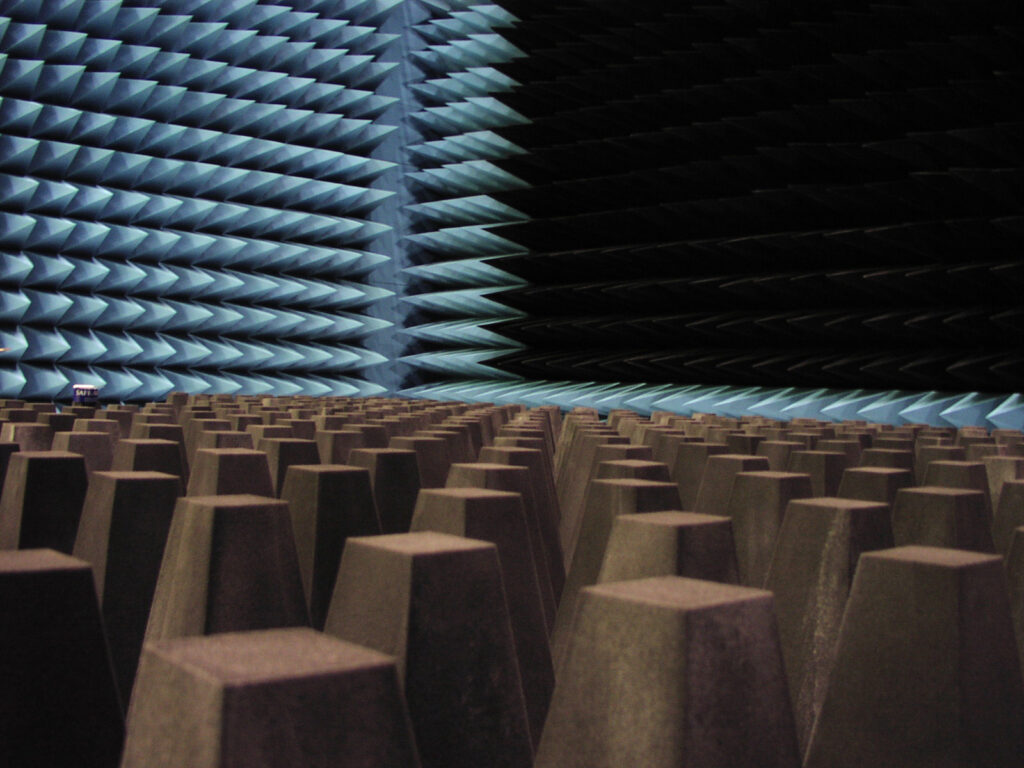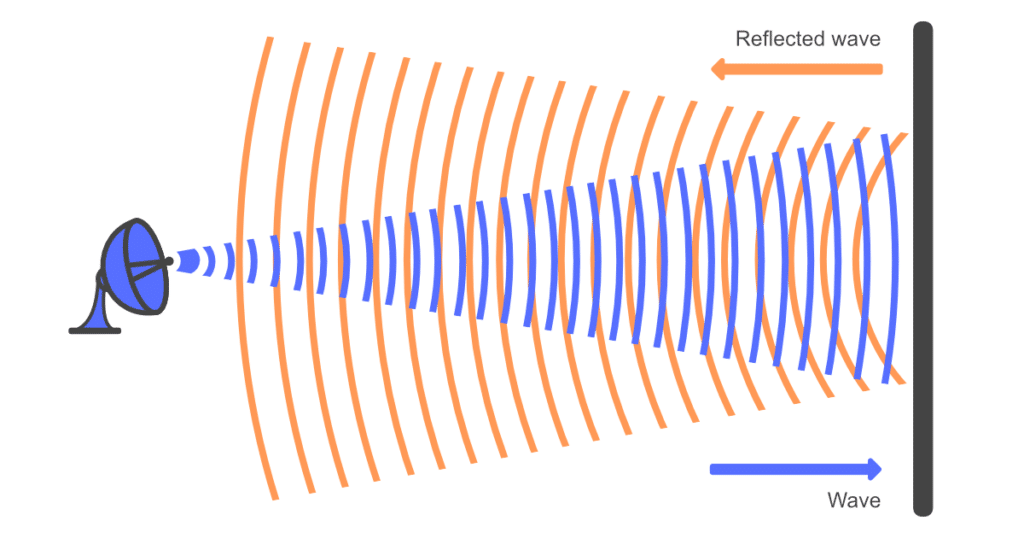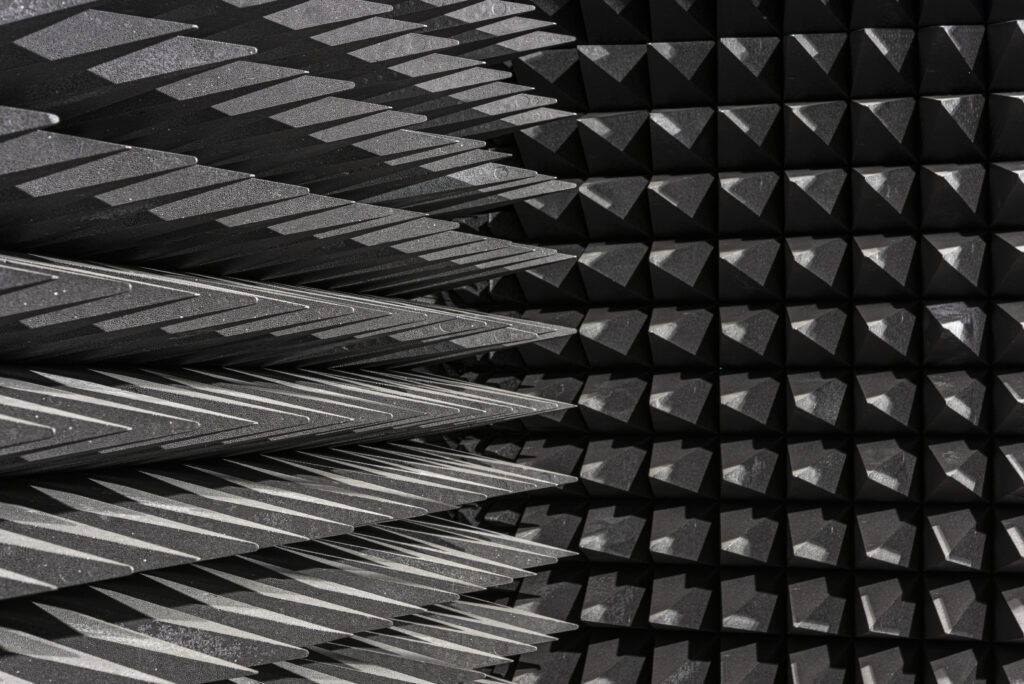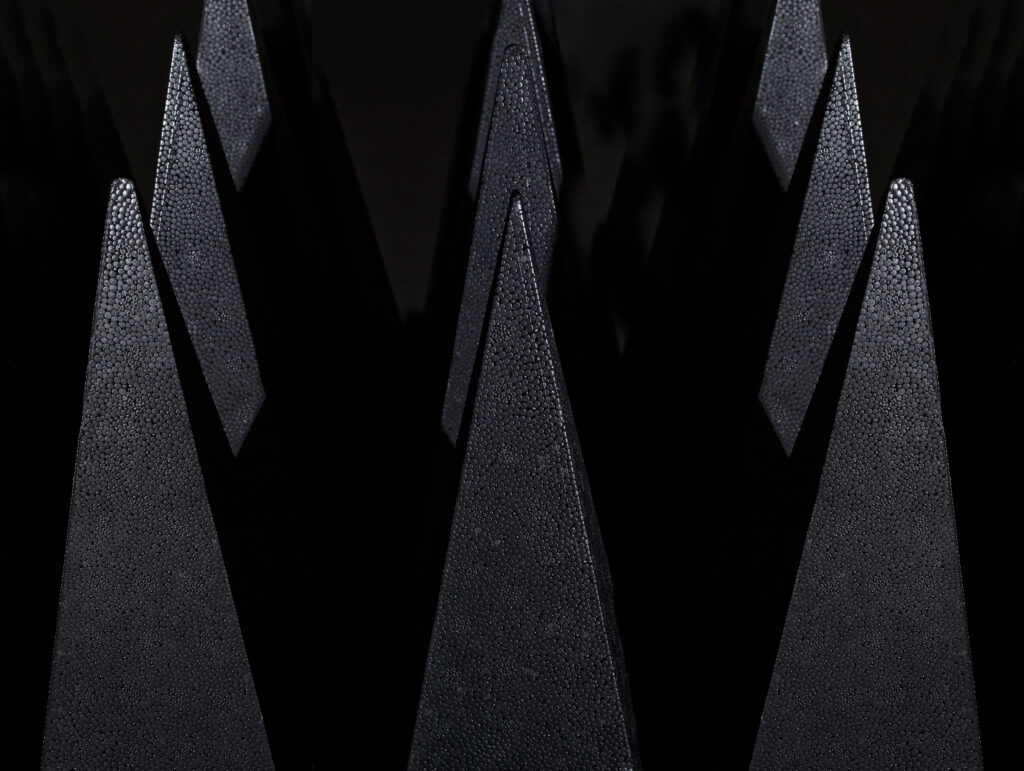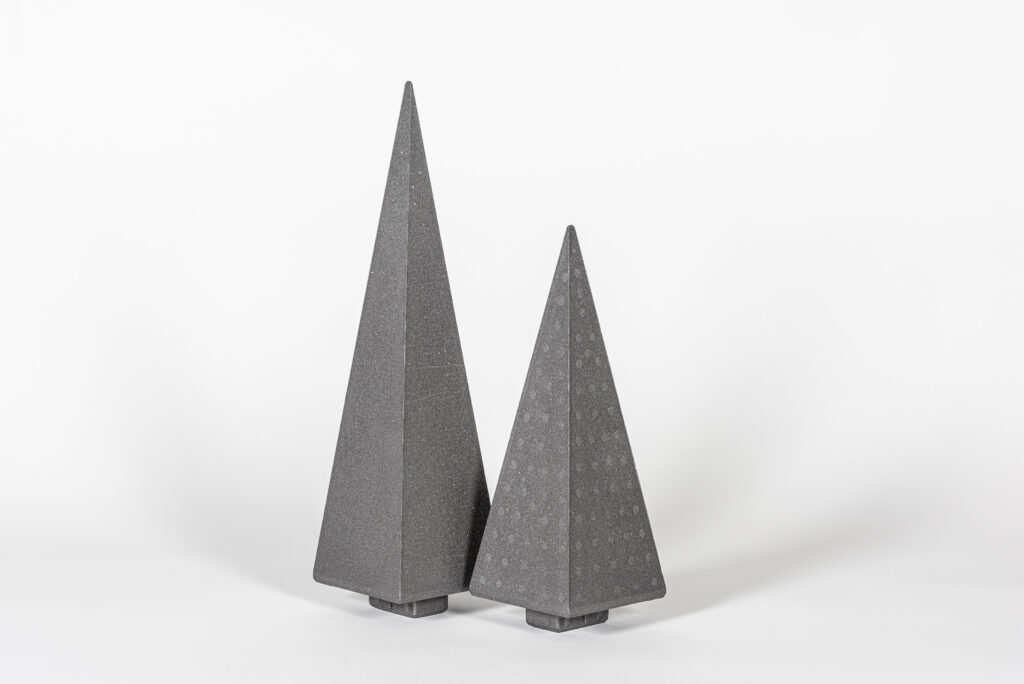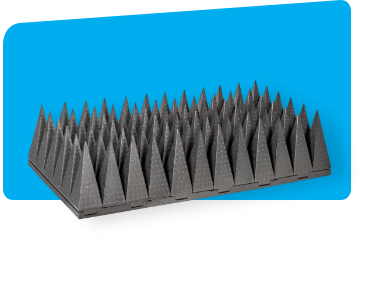A wise man once said: ‘if it ain’t broke, don’t fix it.’ Which, generally, sounds like a good idea, but if everyone heeded these words, endeavoring individuals would never improve on anything either. So what are some of the downsides of foam absorbers? What are characteristics of the RF absorbing foam that can be improved? There’s a couple of things that spring to mind: rigidity, leakage, toxicity, modularity and durability.
While it is easy to create foam absorbers with very sharp tips, the tensile strength of polyurethane does have the tendency to degrade over time due to weight, susceptibility to humidity and age. This causes the tips to droop which negatively affects the attenuation capabilities and therefore the performance of the RF absorbing foam.
Due to the open-cell structure of polyurethane foam, the carbon that is essential for the absorption process, can ‘leak’ from the absorber. This sounds inconsequential, but it actually leads to contamination of the anechoic room and adjoining areas of the facility as the small particles are easily carried everywhere, unlike RF absorbing foam.
Untreated, polyurethane is quite flammable and can ignite easily. This is obviously an undesirable quality. To counter this, polyurethane or foam absorbers are treated with fire retardant chemicals. Combined with their tendency to leak particles, that means foam absorbers are more toxic than some of the alternatives. In addition, foam absorbers are sometimes described as having a ‘peculiar odor.’
To effectively attenuate electromagnetic waves in an anechoic chamber, you need to line the chamber with a significant number of absorbers. The shape of a foam absorbers is cut from a single piece of foam. With multiple pyramids ‘stuck’ to a single base, this means that if one tip of the RF absorbing foam is damaged, you need to change out an entire section of absorbers instead or expect performance degradation.
If you take all of the above into account, foam absorbers have definitely room for improvement in terms of their durability or sustainability. The performance, while excellent, degrades with age because the foam starts to sag. Over time, their effectiveness is also diminished by the leakage of carbon. And, if you accidentally damage one of the absorbers, you’re forced to replace a full section.

